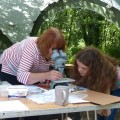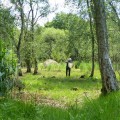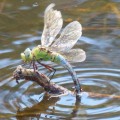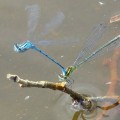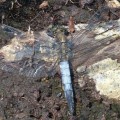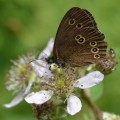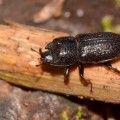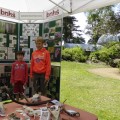… is now available here and contains information about spiders and how to make a nature mobile.
Category Archives: To Do
Summer events for children at RSPB, The Lodge
The RSPB, The Lodge, Sandy run a series of events during the summer holidays:
Mini-beast Safari: These are focused mainly for the younger children and take place in a small area of the reserve away from the trails.
- Tuesday 28th July 10:30-12:00pm
- Monday 3rd August: 2:00-3:30pm
- Thursday 6th August 10:30-12:00pm
- Tuesday 11th August: 10:30-12:00pm
- Thursday 27th August: 10:30-12:00pm
- Wednesday 2nd September: 10:30-12:00pm
- Friday 14th August: 10:30 – 12.30pm
- Tuesday 25th August 2:00 – 4.00pm
YounGnats Newsletter July 2015
… is now available here.
Invertebrates @ Flitwick Moor: 4th July 2015
We had hundreds of invertebrates join us for our exploration of Flitwick Moor, some YounGnats and some not-so-young YounGants came along too.
- Oooh, what’s under the microscope …
- … and in my net?
- A female Emperor Dragonfly ovipositing,
- a pair of Azure Damselflies in tandem,
- a Black-tailed Skimmer,
- a Ringlet
- … and a big black beetle 🙂
Do you know anything about Glow Worms?
If not and you missed our members evening, watch this short home made film that that was made for the Wildlife Trust of South & West Wales (WTSWW) Bridgend Group members night 02/12/13. The film is about the Glow worms you can find in Wales (Lampyris noctiluca). Hope you enjoy it but really hope you make the effort to go in search of your own Glow worm experience.
Bug Lab on Tour 2015
The Greensand Trust have announced the dates for Bug Lab 2015 so if you’re looking for ideas for things to do during the school holidays, why not come along, there must be one near you.
Orchids, Chalk Flora and Butterflies: 27th June 2015
Our walk around Sharpenhoe Clappers started off with 8 and grew to about 16 including 2 YounGnats.
We walked from the car park down moleskin hill by the road and saw Twayblade, Bee, Common Spotted and Pyramidal Orchids in good numbers.
There was a good show of Great Pignut and several butterfly species seen including Dark-Green Fritillary, Marbled white, Meadow brown, Ringlet, Large skipper and Small Tortoiseshell.
The three fields that used to be arable had large numbers of Pyramidal orchids, including one white one, as well as Common Broomrape.
A caterpillar of the Brimstone butterfly was found on a Buckthorn and a fantastic female Small Elephant Hawk Moth was rescued from the path.
On the return to the car park via the hill fort we found white Helleborine that had finished flowering. We searched for Yellow Birdsnest orchid without success, but found Fragrant orchids in the grassland.
Invertebrates @ Shuttleworth: 27th May 2015
It was a lovely day and we had many familes come along to help us explore the grounds of the Swiss Garden, Shuttleworth in search of invertebrates.
These two YounGnats successfully completed the quiz. Well done!
Wildlife in Beds: 2014
Every year, the BNHS recorders provide summaries of the records that have been submitted during the year. The weather had a major impact on the wildlife in 2014 as shown by their summary –
- 2014 was officially the warmest year since records began and the 4th wettest in the 21st century with more than 200mm more rainfall than 2013.
- Weather good for bugs; over 400 species identified in Beds now; 3 new ones found on Turkey Oak Quercus cerris, an alien tree introduced 250 years ago, now widely distributed in S England.
- Bee records down this year. Cuckoo bees had a very poor year which may be because of the wet winter flooding their ground level hibernation sites.
- Weather quite was favourable for butterflies with more than usual up to July; Meadow Brown Maniola jurtina most abundant butterfly but the 3 whites, Small White Pieris rapae, Large White Pieris brassicae, Green-veined White Pieris napae did very badly. Holly Blue Celastrina argiolus numbers also down while Silver Washed Fritillary Argynnis paphia had its best year. Purple Emperor Apatura iris now found at 10 sites.
- Norfolk Hawker dragonfly Aeshna isosceles found breeding in Paxton Pitts in 2013, was seen again in Potton Wood that year but not seen there in 2014. The Variable Damselfly Coenagrion puchellum, a vagrant was found again. 21 other species were recorded during the year. The flight season was extended to 3/12/2014. The last dates of records in previous years have all been in November.
- 27 species of orchids recorded in Bedfordshire. The last 2 years have been good for orchids, with data from over 250 recorders, coinciding with recording for the new orchid book to be released end April 2015.
- 2 new species of hoverflies Syrphus nitidifrons and Leucozona glaucia increasing the total to 127 species.
- No new mammals recorded but Wallaby recorded in Shuttleworth. Water voles Arvicola amphibious still present but Bank Voles Clethrionomys glareolus rarely recorded. 4 records for Harvest Mouse Micromys minutus. Otter Lutra lutra survey going well, Mink Neovison vison are still present though.
- 11 species of Bats recorded.
- More new county records for macro-moths since 1970s and 12 more species of micro-moths.
- 1st frog spawn recorded on 8th March, 10 days earlier than usual. 1st toad spawn reported 18th March 2015. Grass snakes were found in places they are not normally seen.
- Watch out for alien Wasp spiders Argippe bruennichi on verges, the males are difficult to see. Pitfall traps in the same garden for 20 years have found 132 species of spiders and 13 species of Harvestman.
- 9 new species of weevils. Some weevils produce leaf mines and were recorded when searching for leaf-mining moths.
YounGnats Newsletter March 2015
… is now available here.

